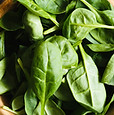About Potash
With increasing global demand for food, fueled by population growth, there has never been a more crucial time for sustainable agriculture. The demand for environmentally responsible, naturally occurring fertilizers has reached an all-time high and shows no sign of abating. The right balance of nutrients helps keep plants strong and healthy. Did you know that one of the most important agricultural nutrients is potassium?
Without sufficient potassium, crops can suffer from stunted growth, reduced quality, and ultimately lower yields. But with potash, you can give your crops the potassium they need to thrive. It is a safe, effective, and sustainable fertilizer that has been used by farmers for many generations.
Geochemistry of Potash
The chemical composition of potash depends on the specific type of potassium salt being referenced.
For example, one common type of potash is potassium chloride (KCl), which is a naturally occurring reddish or white crystalline compound that is soluble in water. Another type is potassium carbonate (K₂CO₃), which is also a white crystalline compound that is used in the production of glass, soap, and other products.
Other potassium-containing compounds that are sometimes referred to as potash salts include potassium sulfate (K₂SO₄), potassium nitrate (KNO₃), and potassium magnesium sulfate (K₂SO₄·2MgSO₄).
The majority of potassium within AP's license areas is contained within the salt mineral termed Sylvinite.
Why is Potash important?
Potash is an essential nutrient for plants, and its availability in the soil is critical for crop growth and yield. As an important source of potassium, which is one of the three primary macronutrients required by plants, along with nitrogen and phosphorus, potash is essential for a variety of plant functions, including regulating water balance, promoting root development, and improving stress tolerance.
Potassium is necessary for the formation of carbohydrates and proteins. It also strengthens plant cells, making them more resistant to diseases and environmental stresses like drought and cold temperatures.
Potash is also used in other industries, such as in the production of soaps, glass, and ceramics. It is also used as a source of potassium in the production of some medicines.

Where is Potash found?
Potash is typically found in rocks types commonly referred to as evaporite deposits. Such deposits are associated with the drying out of ancient sea-beds. Modern day examples of such salt laden seas include the Dead Sea within the Jordan Rift Valley.
AP's potash was formed during the evaporation of a large ancient seabed some 110-115 million years ago during a prolonged period of arid conditions over much of the southern latitudes.
Muriate of Potash (MOP)

Muriate of Potash (MOP) is a common form of potash fertilizer that contains potassium chloride (KCl), it provides a concentrated source of potassium.
read more...
Potash is an important source of potassium, a key nutrient required by plants for various functions, including overall growth and development, photosynthesis, and fruit production. Many plants benefit from the application of potash. Here are some examples of plants that typically respond well to potash fertilization:































Potash
When applied appropriately, MOP can benefit plant growth in several ways:
Promotes root development: Potassium plays a vital role in root growth and development. Adequate potassium levels provided by MOP can enhance root system formation, leading to stronger and healthier plants.
Enhances nutrient uptake: Potassium helps improve the uptake and utilization of other essential nutrients by plants. It aids in the transport of nutrients throughout the plant, optimizing metabolic processes and supporting overall growth.
Improves drought tolerance: Potassium helps plants regulate water balance, reducing water stress and enhancing their ability to tolerate drought conditions. MOP can improve a plant's ability to withstand periods of water scarcity.
Enhances disease resistance: Potassium is known to strengthen a plant's natural defense mechanisms, making it more resistant to diseases, pests, and environmental stresses. Regular application of MOP can help improve plant
immunity and reduce the incidence of certain diseases.
Supports fruit and flower production: Potassium is particularly important for promoting fruit and flower development. MOP can increase the size, quality, and quantity of fruits and flowers produced by plants.